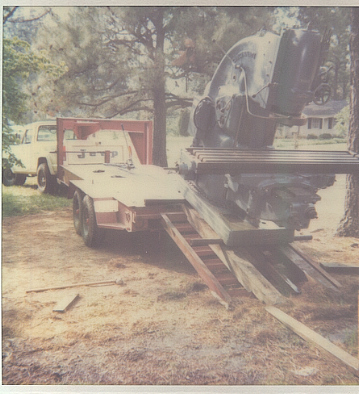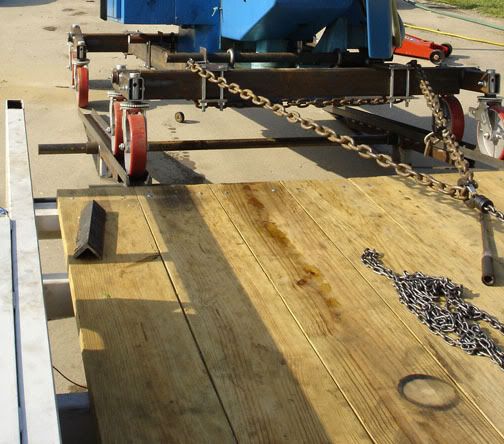Ever dragged a 3,000 lb machine up ramps into pickup truck ?
3,000 lb vertical mill....due to logistics, no forklift and probably no wrecker possiblities (steep hill, lots of mud, out in the middle of nowhere) I've winched a 10,000 lb mill up ramps unto gooseneck trailer before, but with gooseneck you have some proper "meat" to attach the winch (come-a-long) and plenty of room between that attachment point and the machine.
With pickup truck a bit more problematic. But with purpose made steel ramps I might consider trying it....anyone else loaded a machine that heavy into a pickup truck this way and if so what were your ramps like and how did you attach the winch ?
And before anyone starts chattering about using a trailer...the machine is far enough away I don't want to drag a trailer with me (plus the truck (one ton diesel dually) would easily handle a measly 3K lbs in the back)

3,000 lb vertical mill....due to logistics, no forklift and probably no wrecker possiblities (steep hill, lots of mud, out in the middle of nowhere) I've winched a 10,000 lb mill up ramps unto gooseneck trailer before, but with gooseneck you have some proper "meat" to attach the winch (come-a-long) and plenty of room between that attachment point and the machine.
With pickup truck a bit more problematic. But with purpose made steel ramps I might consider trying it....anyone else loaded a machine that heavy into a pickup truck this way and if so what were your ramps like and how did you attach the winch ?
And before anyone starts chattering about using a trailer...the machine is far enough away I don't want to drag a trailer with me (plus the truck (one ton diesel dually) would easily handle a measly 3K lbs in the back)







